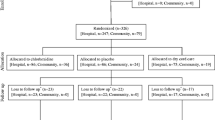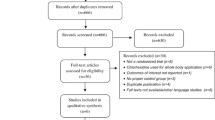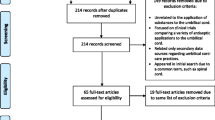Abstract
The efficacy of alcohol or water in promoting umbilical cord separation was compared in a randomized controlled trial. Rates of skin colonization between groups were also evaluated on three occasions. Time to cord separation, rates of colonization, and species of organisms that colonized were compared between groups. Of 148 participants, 136 (92%) completed the protocol. Cords that were cleaned with sterile water separated more quickly than those cleaned with alcohol (t = 3.15, p = 0.002). Betweengroup differences in colonization rates were not found (F = 1.59, df = 2, p = 0.205). Umbilical or other infections did not occur. Bacterial colonization of the umbilical area and surrounding skin occurs over time in healthy term neonates. Cleaning with alcohol will increase the length of time from birth to cord separation but will not prevent colonization of the umbilical area.
Résumé
Dans une étude sur échantillon aléatoire et contrôlé, on a comparé l’efficacité de l’alcool à celle de l’eau pour favoriser la séparation du cordon ombilical. Les taux de colonisation bactérienne cutanée entre les groupes ont également été comparés à trois reprises. Le temps de séparation du cordon, les taux de colonisation et les types d’organismes colonisateurs ont aussi été comparés entre les groupes. Sur les 148 participants, 136 (92 %) ont complété le protocole de recherche. Les cordons ombilicaux nettoyés avec de l’eau stérile se sont séparés plus rapidement que ceux nettoyés avec de l’alcool (t = 3,15, p = 0,002). On n’a pas relevé de différences dans les taux de colonisation des différents groupes (F = 1,59, D = 2, p = 0,205). Il n’y a pas eu d’infections ombilicales ou autres. La colonisation bactérienne de la région ombilicale et de la peau adjacente apparaît avec le temps chez les nouveau-nés, nés à terme et en bonne santé. Le nettoyage avec de l’alcool augmente le temps de séparation du cordon et ne prévient pas la colonisation bactérienne de la région ombilicale.
Similar content being viewed by others
References
Arad I, Eyal F, Fainmesser P. Umbilical care and cord separation. Arch Dis Child 1981;56:887–88.
Tötterman LE, Autio S. Treatment of the umbilical cord of the newborn. Acta Obstet Gynecol Scand 1970;49:57–59.
Barrett FF, Mason EO, Fleming D. The effect of three cord-care regimens on bacterial colonization of normal newborn infants. J Pediatr 1979;94(5):796–99.
Andrich MP, Golden, SM. Umbilical cord care. A study of bacitracin ointment, vs. triple dye. Clin Pediatr 1984;23(6):342–44.
Schuman AJ, Oksol, BA. The effect of isopropyl alcohol and triple dye on umbilical cord separation time. Military Medicine 1985;150:49–50.
Gladstone IG, Clapper L, Thorp JW, Wright, DI. Randomized study of six umbilical cord care regimens. Clin Pediatr 1988;27(3):127–29.
Salariya EM, Kowbus, NM. Variable umbilical cord care. Midwifery 1988;4(2):70–76.
Mansell H. Cord care appraised. The Australian Nurses Journal 1990;20(2):22–23.
Meberg A, Schøyen R. Hydrophobic material in routine umbilical cord care and prevention of infections in newborn infants. Scand J Infect Dis 1990;22:729–33.
Verber IG, Pagan, FS. What cord care — if any? Arch Dis Child 1993;68:594–96.
Bhalla JN, Nafis N, Rohatgi P, Singh J. Some observations on the separation of the umbilical stump in the newborn. Indian J Pediatr 1975;42(334):329–34.
Lawrence, CR. Effect of two different methods of umbilical cord care on its separation time. Midwives Chronicle and Nursing Notes 1982;95(1033):204–5.
Naor N, Merlob P, Litwin A, Wielunsky E. Time of separation of the umbilical cord: A comparative study of treatment with alcohol and rikospray. Eur J Obstet Gynecol Reprod Biol 1989;32:89–93.
Barclay L, Harrington A, Conroy R, et al. A comparative study of neonates’ umbilical cord management. The Australian Journal of Advanced Nursing 1994;11(3):34–40.
Bourke E. Cord care: Too much or too little. The Australian Journal of Advanced Nursing 1990;7(2);19–22.
Martin G, Streng J, Miller M. Current bathing techniques in newborn nurseries in the United States. Am J Dis Child 1983;137(6):529–30.
Barr J. The umbilical cord: To treat or not to treat? Midwives Chronicle and Nursing Notes 1984;97(1158):224–26.
Ronchera-Oms C, Hernández C, Jimémez, NV. Antiseptic cord care reduces bacterial colonisation but delays cord detachment. Arch Dis Child 1994;71(7);F70.
Samuel M, Freeman NV, Vaishnav A, et al. Necrotizing fasciitis: A serious complication of omphalitis in neonates. J Pediatr Surg 1994;29(11):1414–16.
Maki DG, Ringer M, Alvardo, CJ. Prospective randomised trial of povidone-iodine, alcohol, and chlorhexidine for prevention of infection associated with central venous and arterial catheters. Lancet 1991;338(8763):339–43.
Rais-Bahrami K, Schulte EB, Navqi M. Postnatal timing of spontaneous umbilical cord separation. Am J Perinatol 1993;10(6):453–54.
Wilson CB, Ochs HD, Almquist J, et al. When is umbilical cord separation delayed? J Pediatr 1985;107(2):292–94.
Bygdeman S, Hambraeus A, Henningson A, et al. Influence of ethanol with and without chlorhexidine on the bacterial colonization of the umbilicus of newborn infants. Infect Control 1984;5(6):275–78.
Smales O. A comparison of umbilical cord treatment in the control of superficial infection. N Z Med J 1988;101:453–55.
Author information
Authors and Affiliations
Corresponding author
Additional information
This project was funded by grants from the Perinatal Research Centre at the University of Alberta.
Rights and permissions
About this article
Cite this article
Medves, J.M., O’Brien, B.A.C. Cleaning Solutions and Bacterial Colonization in Promoting Healing and Early Separation of the Umbilical Cord in Healthy Newborns. Can J Public Health 88, 380–382 (1997). https://doi.org/10.1007/BF03403910
Received:
Accepted:
Published:
Issue Date:
DOI: https://doi.org/10.1007/BF03403910




